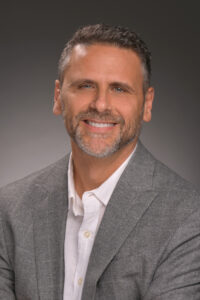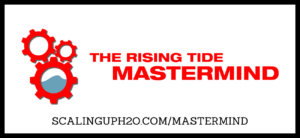 Experience the eye-opening insights on the Demographic Drought that will revolutionize your understanding of today’s job market. Join Ron Hetrick of Lightcast as he shares his decade-long expertise on this global phenomenon in a captivating interview on the Scaling UP! H2O podcast. Discover how the decline in population is impacting the workforce, leaving you struggling to find quality applicants for your company’s open positions.
Experience the eye-opening insights on the Demographic Drought that will revolutionize your understanding of today’s job market. Join Ron Hetrick of Lightcast as he shares his decade-long expertise on this global phenomenon in a captivating interview on the Scaling UP! H2O podcast. Discover how the decline in population is impacting the workforce, leaving you struggling to find quality applicants for your company’s open positions.
In this episode, Ron Hetrick addresses pressing questions, including the influence of an aging population on the labor force and the disparities between STEM graduates and skilled trades. Gain valuable knowledge about the role of birth rates in exacerbating the Demographic Drought and debunk misconceptions surrounding individuals who choose to “opt out” of the workforce. Delve into the implications of the Demographic Drought for the United States and explore strategies to attract applicants and recent graduates to the water industry. Furthermore, explore the evolving relationship between artificial intelligence and the labor force.
Prepare to be astounded by thought-provoking quotes from the episode, such as the far-reaching effects of managing population on the labor force and the startling increase in job openings during and after the pandemic. Uncover the compounding problem of declining birth rates and the urgent need for immigration to sustain future growth. Challenge traditional notions about college education and embrace the importance of all types of jobs in society. Witness the reality of more men in their 20s and 30s living with their parents, and discover the marketing challenges faced by industries competing for labor.
This episode will reshape your perspective on hiring challenges, inspire innovative approaches to workforce development, and prompt you to reevaluate your expectations and attitudes. Explore the transformative potential of AI in the labor market, envisioning the new job opportunities it can create. Embrace the possibilities offered by robotics, not as job-stealing adversaries, but as partners in creating more fulfilling and less labor-intensive work environments.
Don’t miss this enlightening episode that will equip you with invaluable insights for navigating the complexities of the Demographic Drought and revolutionizing your approach to workforce management.
Timestamps
Legionella Awareness Month is in August and other upcoming events [1:00]
Interview with Ron Hetrick of Lightcast [9:00]
Periodic Water Table With James McDonald [51:00]
Connect with Ron Hetrick
Phone: 904.415.6558
Email: ron.hetrick@lightcast.io
Website: lightcast.io and tallo.com
LinkedIn: in/ronlhetrick
YouTube: The Demographic Drought, part 1
YouTube: The Demographic Drought, part 2
Economic Modeling: economicmodeling.com/demographic-drought/
Quotes
“We have a service economy, but there isn’t anyone to serve us.” -Ron Hetrick
“Our growth in the future will only come from immigration, not from domestic populations in the US.” -Ron Hetrick
“Gen Z wants to determine their own hours, work remote, and have a work life balance.” -Ron Hetrick
“Bottomline Advice: Develop a less labor-intensive model whenever possible. Change the delivery model.” -Ron Hetrick
Links Mentioned
IWC Conference, Trace Blackmore will be 2023’s Keynote Speaker
mikeroweWORKS, hosted by Mike Rowe
Scaling UP! H2O Academy video courses
AWT (Association of Water Technologies)
2023 Events for Water Professionals
Check out our Scaling UP! H2O Events Calendar where we’ve listed every event Water Treaters should be aware of by clicking HERE or using the dropdown menu.
Periodic Water Table With James McDonald
Now, Trace recently did a Pinks & Blues episode on Total Dissolved solids and conductivity. Let’s see how much you remember. How do you define total dissolved solids or TDS? Are suspended solids included in this definition? What are examples of chemicals included? Are TDS and conductivity the same or different? How are they related? Is there one rule of thumb to convert from one to the other or can the conversion differ for different waters? How is TDS measured? How is this different from how suspended solids are measured? How does cycling up affect TDS in a water system? What might be the impact on TDS if a water system is over cycled or chemical feed is interrupted?


